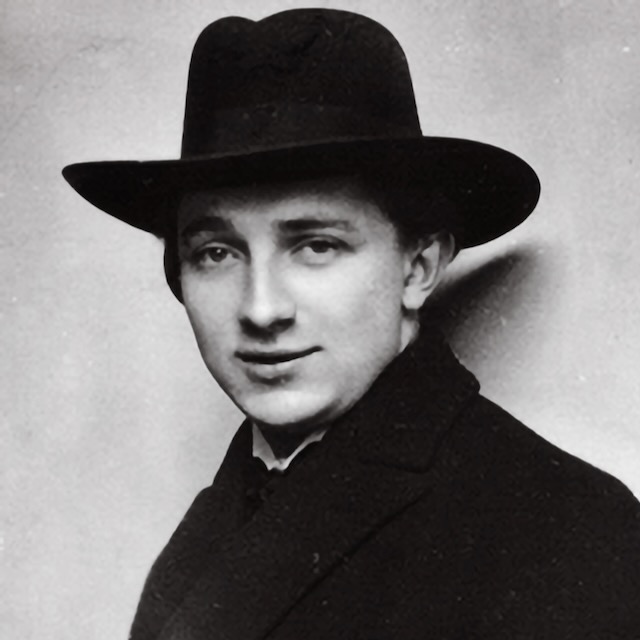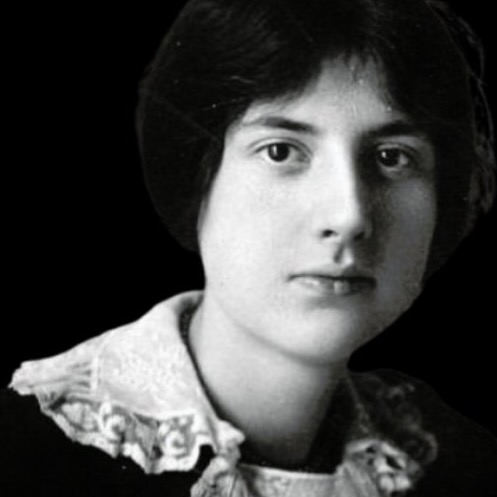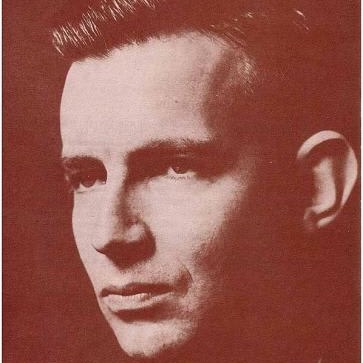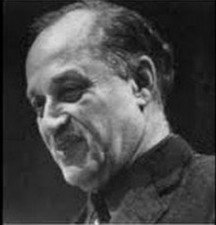Program notes for November 2025 concert
Jump to notes by clicking on title:
Hailstork: Fanfare on Amazing Grace • Peeters: Entrata Festiva • Peeters: Magnificat • Boulanger: Pie Jesu • Boulanger: Psalm 24 • Gabrieli: Canzon Septimi Toni No. 2 • Boulanger: Vieille prière bouddhique (Old Buddhist Prayer) • Karg-Elert: Marche Triomphale (Nun danket alle Gott) • English Carol: The First Nowell • Bach: Wachet auf, ruft uns die Stimme • Pinkham: Christmas Cantata • Elgar: Nimrod from Enigma Variations • Janowski: Sim Shalom (Grant Us Peace) • Traditional carol: O Come, All Ye Faithful
Notes by Margarita Restrepo, PhD
Adolphus Hailstork (b. 1941): Fanfare on Amazing Grace
In 2003, Hailstork, an African American composer and educator born in Rochester, New York, wrote a work for brass and organ titled Fanfare on Amazing Grace. Fanfares have a long history, originating in antiquity and used throughout history to announce the arrival of an important person or the beginning of a ceremonial event. With that purpose in mind, fanfares are scored for “loud” instruments, such as trumpets, French horns, and trombones, often supported by percussion, like timpani and cymbals, giving fanfares a festive sound. In this piece, however, Hailstork, trained as an organist, combines a fanfare with an organ prelude to pay homage to Johann Sebastian Bach, one of the most revered organists in the Western tradition, particularly known for his extraordinary organ preludes.
Following the convention of organ preludes, Hailstork uses a church hymn, “Amazing Grace,” and surrounds it with elaborate counterpoint. One of the best-known hymns in the world, the words to “Amazing Grace” were written in 1772 by John Newton, an English Anglican clergyman, who grew up without any religious conviction. While working in the Atlantic slave trade, his ship almost capsized, an experience that began his conversion to Christianity. Newton became an abolitionist and began to write hymns, among them “Amazing Grace.” The melody dates from 1835 when William “Singing Billy” Walker, a music director in South Carolina Baptist congregations, assigned Newton’s words to a traditional song named New Britain.
Hailstork keeps the festive sound of a fanfare throughout the piece by having the brass repeatedly stating a celebratory theme around which we hear the broad phrases of the hymn played by the organ. In 2021, the Fanfare on Amazing Grace was arranged by Master Gunnery Sergeant Don Patterson as part of the music for the Inauguration of President Joe Biden, making Hailstork the second African American composer ever to be featured at a presidential inauguration.
 Flor Peeters (1903–1986): Entrata Festiva, Op. 93
Flor Peeters (1903–1986): Entrata Festiva, Op. 93
Peeters, a Belgian composer and virtuoso organist, wrote Entrata Festiva in 1959, subtitled it “Processional and Recessional,” and dedicated it to his friend and colleague, Léopold Sluys. Peeters scored the piece for organ, two trumpets, two trombones, timpani, and unison chorus, giving the work the sound of a fanfare, suitable for both a processional and recessional. For the text, he chose Christus Vincit also called Laudes Regiae (Royal Praises), a hymn that acclaims Christ as the King of Kings.
Peeters, who had great respect for the Catholic Church and the tradition of church organists, opens the piece with a lengthy and majestic introduction played by the organ and brass. Peeters sets the first three lines of the long hymn, “Christus vincit, Christus regnat, Christus imperat”; however, to celebrate the fiftieth anniversary of the Commonwealth Chorale, Maestro Driscoll has changed the words to “Dona annos, Dona memoriam, Dona futurum” (Grant years, Grant memory, Grant the future). For the melody sung by the soloist and chorus, Peeters does not use the original chant – but a chant-like melody. After four repetitions of the melody, Peeters closes with a last statement of the melody sung a fourth below to emphasize the reverential mood.
Peeters: Magnificat, Op. 108
Peeters composed the Magnificat in 1962 and dedicated it to Roger Wagner, the founder of the Roger Wagner Chorale. Wagner, also an organist, had studied under Peeters’ close friend, the renowned French organist Marcel Dupré in Paris in the 1930s. The Magnificat is the evening prayer in the Liturgy of the Hours. The narrative is based on the Gospel of Luke (1: 46-55), where Mary, in the early stages of her pregnancy, greets Elizabeth by expressing her joy for having been chosen as Jesus’s mother, “My soul magnifies the Lord, and my spirit rejoices in God my Savior, for He has looked with favor on the lowliness of His servant.”
Considered one of the most significant Catholic composers of the twentieth century, Peeters’ Magnificat reflects his reverence for and expertise of chant. The opening ascending melody of the organ uses the intonation of the eighth chant tone, a simple melodic formula used to sing the Magnificat. Although there are no other instances of chant, the chorus’s melodies resemble chant, moving mostly by step. Peeters combines chant-like melodies with colorful chords played by the organ, as well as frequent meter changes. To highlight the words, Peeters has the altos alone singing “For he hath regarded the humility of his handmaid,” with the sopranos and tenors replying, “all generations shall call me blessed.” But for most of the piece, he keeps all four voices singing in homorhythm often in unison, a forceful texture to express Mary’s words as she highlights God’s almighty power. To close the piece, the organ repeats the ascending melody of the opening with the choir singing “Magnificat” in fortissimo.
 Lili Boulanger (1893–1918): Pie Jesu
Lili Boulanger (1893–1918): Pie Jesu
Boulanger, a French composer, suffered from ill health throughout her life, which led to her death at the age of 25. When describing her last days, her sister Nadia, a prominent composer herself, noted that “Knowing that her days were numbered, she worked feverishly. Towards the end of her life, she dictated to me her Pie Jesu. On her deathbed, her strong faith gave her a sense of serenity.” Nadia who worked tirelessly to preserve her sister’s legacy, published the piece posthumously in 1922, with a scoring for a small chamber ensemble as well as today’s arrangement for voice and organ.
A devout Catholic, Boulanger set to music the Pie Jesu, the closing two lines of the Dies irae, a medieval Latin poem describing the Last Judgment. The text is a plea to “merciful Jesus” for everlasting rest. Her setting is moving and otherworldly at the same time. For the first half, the organ obsessively plays a chromatically ascending and descending melody, above which the soloist sings a disjointed melody with large ascending and descending leaps. After a dissonant chord, the mood of the second half turns lighter, perhaps an indication of the serenity which her strong faith gave her, as her sister noted, as it sounds like an acceptance of her approaching death.
Boulanger: Psalm 24
Boulanger began writing Psalm 24 in 1916 during her second stay in Rome, as a Prix de Rome winner. She was forced to return to Paris in 1916 due to health issues. Back in Paris, aware she did not have much longer to live, she increased her musical production, focusing on choral works with a spiritual message, Psalms 24, 129 and 130, and Vieille prière bouddhique.
She dedicated Psalm 24 to M. Jules Griset, an industrialist, amateur cellist, and director of the Chorale Guillot de St. Brice, and supporter of her music. The premiere took place in 1923, five years after her death, at the Paris Conservatoire, as part of a larger presentation of her works. The concert included conductor Henri Büsser, composition professor at the Conservatoire and conductor at the Paris Opéra; Boulanger’s older sister Nadia at the organ; the chorus of the Conservatoire; and the Paris Opéra orchestra.
Psalm 24 is a plea for salvation and the Lord’s blessing. Boulanger chose a four-part choir, organ, brass, timpani, and harp. Trumpets and trombones doubled by the organ open the piece in fortissimo, where the accented rhythms produce a militaristic sound that reflects God’s power. When the choir enters, only tenors and basses are present, as it was men who led prayers in ancient Jerusalem following the patriarchal culture of the time. The text “the one who has clean hands and a pure heart, who does not trust in an idol or swear by a false god” is set in a gentler style, with a slower tempo and softer dynamics. To further emphasize this softer section, Boulanger has a soloist sing “they will receive blessing from the Lord and vindication from God their Savior,” in an ascending line that reaches the highest note of the piece. The full choir enters to close the piece with music that resembles the forceful opening. Soprano and tenor, and alto and bass double each other or sing in unison, with the syllabic, emphatic, and bombastic melodies of the opening, to proclaim “the Lord strong and mighty, the Lord mighty in battle.” Boulanger closes with repeated statements of “the Lord, He is the King” with the choir in unison and increasingly faster tempo.
Giovanni Gabrieli (1557–1612), arr. David Marlatt: Canzon Septimi Toni No. 2
The Canzon Septimi Toni No. 2 was one of fourteen canzonas published in Gabrieli’s Sacræ Symphoniæ (1597), containing both vocal and instrumental music for use at St. Mark's Cathedral in Venice, where he was organist and principal composer from 1585 until his death. Canzonas originated as instrumental arrangements of chansons, French polyphonic songs, but became independent of their models, becoming some of the first pieces intended for instrumental performance rather than the imitation of vocal music.
A majestic and joyful piece, Canzon Septimi Toni No. 2 is written in Mixolydian mode. Although Gabrieli did not specify the instruments in the score, he probably had cornettos, wooden wind instruments, and sackbuts, the ancestors of trombones, in mind. This afternoon, we are using an arrangement for organ and brass by David Marlatt. The organ and brass play in what can be described as a “call and response” effect, creating a musical conversation between them. This was a feature of Gabrieli’s style, known as the Venetian polychoral style, which experimented with the placement of instruments in the several elevated choir lofts at St. Mark’s, creating a stunning acoustic experience.
Boulanger: Vieille prière bouddhique (Old Buddhist Prayer)
Vieille prière bouddhique was one of the last pieces Boulanger composed before her death. It sets an old Buddhist text translated into French by her friend Suzanne Karpelès, a scholar of languages and cultures of southeast Asia. The original was in Pali, a common language in parts of ancient India that served as the language of the Buddha and his teachings. The piece expresses the right of all beings to pursue happiness and find our own destiny, without obstruction or enemies. This must have been a significant message for Boulanger, as she was deeply troubled by the suffering brought about by World War I, and worked with her sister to organize support for French soldiers during the conflict. Unfortunately, she died in March of 1918, nine months before the armistice was signed.
Although Boulanger scored the piece for tenor solo, four-part choir, and a large orchestra, today’s arrangement by Maestro Driscoll has the choir accompanied by organ, brass quintet, and timpani. Boulanger composed the work using the Phrygian mode, with its flattened second scale degree, to create a subdued, intense, and exotic sound. The piece opens with the altos and basses introducing a succinct, ethereal theme that is the foundation of the work. When the sopranos and tenors join, they also hum a concise melody based on perfect fifths, greatly enhancing the hypnotic effect. After a second statement of the prayer, Boulanger introduces an organ interlude playing the theme. The third statement of the prayer is sung by the soloist before concluding with a fourth statement of the prayer where the full choir sings the theme in fortissimo alternating between unison and imitation to end in an explosion of repetitions of “Ah!”
Sigfrid Karg-Elert (1877–1933): Marche Triomphale (Nun danket alle Gott), Op. 65, No. 59
Karg-Elert, a German composer and organist, composed 66 chorale improvisations for organ between 1906 and 1908. Marche Triomphale was the 59th piece of Volume 6, titled Confirmation, Wedding, Baptism, Harvest Celebration. He followed a long and revered tradition in Lutheran music, where these chorale improvisations were used to introduce the hymn assigned for a specific day. The organist takes the hymn – a simple and singable melody – and creates a complex and varied piece by elaborating on the melody, adding embellishments, contrapuntal lines, and harmonic variations. The hymn used here is Nun danket alle Gott (Now thank we all our God), written in 1636 by Lutheran pastor Martin Rinkart, as a short prayer before meals. In Marche Triomphale, Karg-Elert takes this simple hymn and transforms it into an exultant and triumphal march. Not surprisingly, it became not only the most beloved work of the 66 chorale improvisations, but also his most popular composition.
Anonymous, arr. David Willcocks (1919–2015): “The First Nowell”
As with many Christmas carols, the origin of “The First Nowell” is unknown. It was first published in Carols Ancient and Modern (1833), a collection of 81 carols edited by William Sandys, an English lawyer and antiquarian. The text describes the “First Nowell” – using the French term Noël, meaning Christmas – celebrated by “poor shepherds in fields” who came to see Jesus as well as the “three wise men” who followed a star to find Jesus. The melody is unusual among folk songs in that it consists of one musical phrase repeated twice, followed by a refrain which is a variation on that phrase. Willcocks, the conductor of the King's College Choir at Cambridge University, presents the simple melody with the choir singing in unison in stanzas 1 and 6, and harmonized for the remaining stanzas. The sopranos sing the melody in stanzas 2 and 4, while in stanzas 3 and 5 it is the tenors who carry it.
Johann Sebastian Bach (1685–1750): Wachet auf, ruft uns die Stimme, BWV 645
Wachet auf, ruft uns die Stimme (Awake, calls the voice to us) is the opening chorus of Bach’s cantata No. 140. Cantatas are sacred, multi-movement works featuring chorus, soloists, and orchestra. In Lutheran Germany, they were performed during Sunday services as musical sermons expanding on the preacher’s message on the day’s Epistle and Gospel. Writing cantatas for the four principal Lutheran churches in Leipzig was one of Bach’s main responsibilities during his 27 years there; he wrote about 300, of which 200 are in existence today. Wachet auf, ruft uns die Stimme was composed for the parable of the Ten Virgins (Matthew 25:1–13). The title is a call to the ten bridesmaids to “wake up,” as they had fallen asleep while waiting for a groom who was late to his own wedding.
Bach scored the work for three vocal soloists – soprano, tenor, and bass – four-part choir, and a small orchestra. Today’s version is arranged for organ and French horn solo. The movement is based on a hymn written by Philipp Nicolai (1556–1608) a German Lutheran pastor, poet, and prolific composer of hymns. In this arrangement, the horn soloist plays the hymn tune, while the organ plays independent material that highlights the beauty of Nicolai’s melody.
 Daniel Pinkham (1923–2006): Christmas Cantata: Sinfonia Sacra
Daniel Pinkham (1923–2006): Christmas Cantata: Sinfonia Sacra
Pinkham wrote his Christmas Cantata, his most widely performed work, in 1957 for the New England Conservatory Chorus. The premiere, on December 1 of that year, was performed by the chorus under the direction of Lorna Cooke DeVaron. Although Pinkham was working at the Boston Conservatory then, he joined NEC in 1959, becoming DeVaron’s colleague and collaborator. As a member of the choir and a student of Pinkham at that institution, I remember fondly how much respect they had for each other and how much they enjoyed working together.
In this cantata, Pinkham pays homage to the early Baroque, a period of music he was passionate about. In fact, at NEC he was head of the department of early music performance, as well as professor of music in the Baroque. He subtitled the piece Sinfonia Sacra, using the Baroque term “sinfonia” meaning the “sounding together” of instruments and voices. Pinkham likely had Gabrieli’s two publications of Sacrae symphoniae (1597 and 1615) in mind. Although Pinkham does not use double choruses as Gabrieli did, Pinkham uses a double ensemble of brass and organ, giving the piece a festive and lively sound.
Pinkham structured the cantata into three movements that use Latin texts. The first asks “What did you see, shepherds?” The shepherds’ answer, “We saw the newborn Child and choirs of Angels praising the Lord, alleluia!” is sung by the full chorus in a lively dance-like triple meter. The second movement is slow and mystifying to describe the “Oh great mystery” of Jesus’ birth. The sopranos and altos sing a subtle melody about the animals in the manger. For the words praising Mary, "Blessed is the Virgin whose womb was worthy to bear Christ the Lord,” Pinkham uses the full chorus in polyphony. The final movement is fast and festive to express the words sung by the angels: “Glory to God in the highest.” Pinkham uses those words as a refrain and intersperses them with the first three verses of Psalm 100, “Make a joyful noise unto the Lord.” The movement ends with jubilant repetitions of Alleluia.
Edward Elgar (1857–1934): Nimrod from Enigma Variations, Op. 36
Nimrod is the ninth and best-known piece in Elgar’s Enigma Variations (1898–1899), an orchestral work of fourteen variations on an original theme. Its successful premiere established Elgar as a leading figure in the English musical scene and set him on the path to international recognition. Nimrod is a tribute to his editor and publisher Augustus J. Jaeger. Since “Jaeger” means “hunter” in German, Elgar titled this variation “Nimrod,” alluding to Noah’s great-grandson, who was described as a mighty hunter and king who forged his own path and commissioned the Tower of Babel. Nimrod, performed this afternoon in an organ arrangement, begins quietly with a long and expressive melody that dominates the piece. Although the melody sounds tentative at first, it gains in strength and confidence, gradually reaching a powerful peak, showing how the support of his friend Jaeger helped him overcome his insecurity. In England, Nimrod is associated with solemn occasions and has been played at the royal funerals of Princess Diana, Prince Philip, and Queen Elizabeth II.
 Max Janowski (1912–1991): Sim Shalom (Grant Us Peace)
Max Janowski (1912–1991): Sim Shalom (Grant Us Peace)
Composed around 1953, Sim Shalom (שִׂים שָׁלוֹם) is one of the best-known choral works by Janowski, a German-born American who was one of the most influential composers of synagogue music in the twentieth century. The title means “Grant Peace” and is the closing morning supplication for peace in the Amidah, the core prayer in every Jewish service. In it, worshippers ask for peace, goodness, and blessing for themselves and all of Israel.
Janowski dedicated the work to Ralph Bunche, an American diplomat who received the 1950 Nobel Peace Prize for mediating the 1947 Arab-Israeli conflict. Janowski’s gift for melody is clearly seen in Sim Shalom. The choir sings the refrain, and the cantor the verses. While the choir’s melodies, often sung in unison, are subdued and reflective, the cantor’s lines are expressive and highly decorated to infuse the prayers with rich emotional and spiritual depth.
Anonymous, arr. David Willcocks (1919–2015): “O Come, All Ye Faithful”
The origins of “O Come, All Ye Faithful” are uncertain. It appeared in print for the first time in John Francis Wade’s Cantus Diversi pro Dominicis et Festis per annum (1751), a collection of songs in Latin for Sundays and feasts throughout the year. It is possible, however, that Wade copied it from other sources. In Wade’s publication the carol was in Latin under the title Adeste Fidelis. In 1841 it was translated into English as “O Come All Ye Faithful” by Frederick Oakeley, an Anglican pastor who was interested in using it at his London congregation; eventually his translation spread around the world.
Willcocks’s arrangement for choir, organ, and brass uses the version from The English Hymnal, edited by Percy Dearmer and the composer and music historian Ralph Vaughan Williams. For the penultimate verse, Willcocks wrote a soprano countermelody and for the last, a reharmonized organ accompaniment. This arrangement, known for its powerful, triumphant, and joyous character, is now considered the definitive version of the carol, becoming the standard for congregational singing and professional choral performances alike

